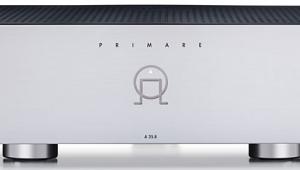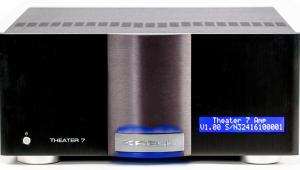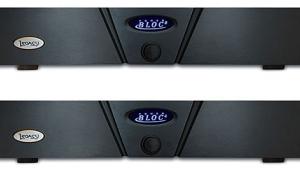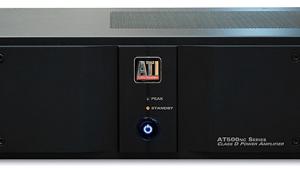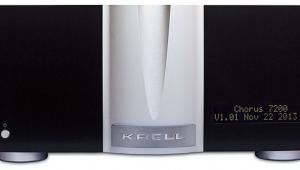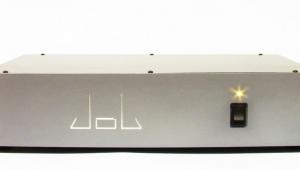Outlaw Model 7125 Amplifier
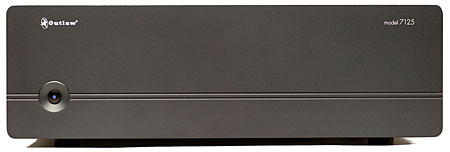
And they're not even all that popular in the home theater universe, at least not as stand-alone products. Sure, you need one somewhere in your system, but most home theater enthusiasts get their amplification from an AV receiver. Sales of separate power amps, which must be used either with a preamp-processor or a receiver with preamp outputs, are miniscule when compared to that all-in-one-box solution.
Amps get more attention in the two-channel world. Committed audiophiles still have endless arguments about amps. High or low power? Stereo or monoblock? Feedback or no feedback? Solid-state or tubes? And among the tube crowd, the controversy is usually over push-pull pentode versus single-ended triode (or SET, as the latter are known among the cognoscenti).
Separate amps can cost as much as a nice home in some parts of the country. For the most outrageous example we could find, go here. That's truly the top of the ladder in amplifier pricing, but it's not hard to pay in the high four (or even low five) figures for two channels of high-end audio amplification.
But separate power amps make a lot of sense for a home theater. You can locate them separately from the pre-pro. When you want to upgrade, you don't have to chuck the whole electronic package at once. And if you take a close look at the specs for all but a scant few AV receivers you'll often find cautions to use only speakers rated above 6 ohms. You'll also find creative ways of rating the power output of AV receivers, like "150Wpc" with no specification as to whether this rating applies to seven channels driven at once, or just one.
With most separate power amps, there's no confusion; they're nearly always rated for all channels driven, and no audiophile would buy one that won't easily drive a 4-ohm load. Some are even specified into lower impedances.
There is, of course, one penalty with separate amps and pre-pros. Even if you avoid models tagged with the lofty high-end prices mentioned earlier, they usually cost more than all but the most expensive single-chassis receivers.
Enter companies like Outlaw Audio. Outlaw has made a successful business of selling separate amps and pre-pros (and yes, receivers and other components, too) at remarkably low prices. Apart from intelligent design and offshore manufacturing (for some of their models—the amp under review here is made in the US), they have been able to do this by selling directly to consumers over the Internet (their products are not available in stores).
Design
There's not much to be said about multichannel amps in the way of features, and Outlaw's new Model 7125 design is no exception. The front panel of this seven-channel design is adorned only with a Power/Standby button that glows blue when the amp is on, yellow in Standby. (It takes a few seconds for the light to turn blue indicating the transition from Standby to On.) The short but thorough owner's manual suggests that the light will go out in Standby, but it doesn't unless you also turn off the main power switch located around back.
The back panel sports that main power switch (which you'll use only when you want to cut all power to the amp, including Standby), a fuse, and a fixed power cord (unusual in these days of IEC jacks and detachable cords). Seven single-ended inputs and seven sets of speaker binding posts complete the inventory. There's plenty of open acreage on the back panel.
I did find it a chore to obtain a secure connection to the Model 7125's slant-mounted binding posts using spade connectors and the usual stiff, audiophile-approved speaker wire. But if you use reasonably flexible wire and/or banana plugs you should have no problem. Banana plugs and jacks get the evil eye from audiophiles because they don't always provide as tight a connection as spades. That may be true, but I did note that the banana connections on the 7125 were comfortably snug. For the home theater reviewer or audiophile who switches gear in and out frequently (or, in my case, who compares amplifiers and needs to make a quick change from one to the other to maximize that elusive human auditory memory) bananas are indispensable.
The 7125's circuit design is totally complementary, input to output, with six output devices per channel. The power supply boasts 20,000 µf of total filter capacitance, driven by a 1.6KVA toroidal transformer. Each of the seven amplifier modules has its own heat sinks. The amp never ran more than moderately warm in normal operation.
Sounding it Out
Amps are possibly the most complicated part of a system to evaluate, if only because they are so dependent on what comes before and after them in the chain. But given that, the Outlaw 7125 does a startlingly good job. It's startling not because it's a fine amp—there are a lot of very fine amps out there- but because so few of them cost only $142, plus change, per channel.
On the two sets of (mainly) Energy speakers I used in the review (speakers with a definite family resemblance, though separated by a more than a decade in design and three-times in price), the 7125 performed far out of proportion to its cost and power rating.
I began my listening, as I always do, with music, using only two of the amplifier's channels. I drove the speakers full range, with no subwoofer, to test the Outlaw's full-range capabilities. While two-channel operation does not stress the ultimate performance of a multichannel amplifier, it does make it easier to get a handle on the sonic flavor of its sound, if any.
To those who argue that well-designed amplifiers all sound the same, I'll only say that if this is your position, and if 125Wpc is enough for your speakers and room, buy the Model 7125. Don't worry, be happy. For you, the following discussion will be more of a description of the overall sound of the system(s) I used with the Outlaw rather than the amplifier itself.
That's fine, because that sound was outstanding. High frequencies were detailed without being overbearing. Sibilants were slightly prominent on close-in vocals of soloists (like Holly Cole) who like to swallow their microphones, but kept their place on more natural vocals such as most of the recordings from the King's Singers. The amp clearly reproduces the differences in program material; if the recording is bright, it's bright (but only actively annoying on the most exaggerated recordings). If the recording is softer and less detailed, that's how it sounds. The mids were uncolored, and the amp did a fine job in reproducing both depth and lateral placement on recordings offering a well-defined soundstage. To a certain extent, an expansive, generous soundstage is characteristic of the Energy speakers, but the Outlaw does not diminish this in any obvious way.
The Outlaw's bass was hard to fault either in power or extension. The hard-pounding percussion on the CD soundtrack of Master and Commander: The Far Side of the World made me sit up and take notice, as it should. And while the (now discontinued) Energy Veritas v2.8s will not dig as deep as a good subwoofer (though it comes close, if you don't demand outrageous output levels), I never felt the need for more low-end weight, impact, or power with any music I could throw at the system.
Comparisons
I don't hear any of the classic flaws often attributed to solid-state in the Outlaw 7125. There's no unnatural glare or edginess, though neither is there any of the pleasantly warm coloration of many tube amps. This is clearly a good solid-state design, and there's no apparent attempt to make it sound like something else.
But if there are any shortcomings in the Outlaw's sound, they come down to a slight leanness in the upper bass and lower midrange, and a (very subtle) softness in the deep bass. These weren't all that easy to spot when listening to the amp through the Energy Veritas v2.8 speakers (which are a bit warm-sounding through the midbass to begin with). But I did hear it when I compared the sound of the Model 7125 to that of two other amps: Outlaw's original Model 750, and a Proceed AMP5.
(See my 1994 Stereophile review of the Energy v2.8s speakers here. I bought the review samples, and 12 years later still consider them one of my primary references, though they're not set up as often as I would like since Energy never marketed a matching center channel speaker. The new Veritas series is significantly different).

